Issues in the tissues: Four main causes of our physical and mental suffering
11Time and time again, I find that Patanjali’s Yoga Sutras offer invaluable insight into every subject I’m exploring at any given moment. Last time we talked about the nervous system and how much of our physical and mental suffering is caused by the nervous system gone awry. As I reflected on the nervous system, I was reminded of yoga sutra 2.15, which describes four main causes of our (human) suffering. Of course, the sutra can be (and is) interpreted in various ways, but I was struck by how appropriate it is when applied to our nervous system. Let’s do a quick translation and then investigate it from the neuroscience perspective.
2.15 Parinama-tapa-samskara duhkhaih-guna vrtti-virodhat-ca duhkham-eva sarvam vivekinah
Because of the particularities of Sanskrit grammar, the work dukhaih (translated as “cause of pain, suffering”) applies to each of the first three words. This means that the first three words of the sutra describe three main sources of suffering: parinama, tapa, and samskara. In addition, ca means “also,” and it applies to guna vrtti-virodhat, which means that this is another cause of suffering. The rest of the sutra duhkham-eva sarvam vivekinah can be translated as “The wise, discerning person understands that all of those (above) invariably cause suffering.” Let’s analyze those four things that cause suffering and their connection to the nervous system.
parinama – transformation, transition, or change
tapa – a feeling of distress, torment
samskara – habit, conditioning, trauma
guna vrtti-virodhat – chaotic fluctuations of gunas.
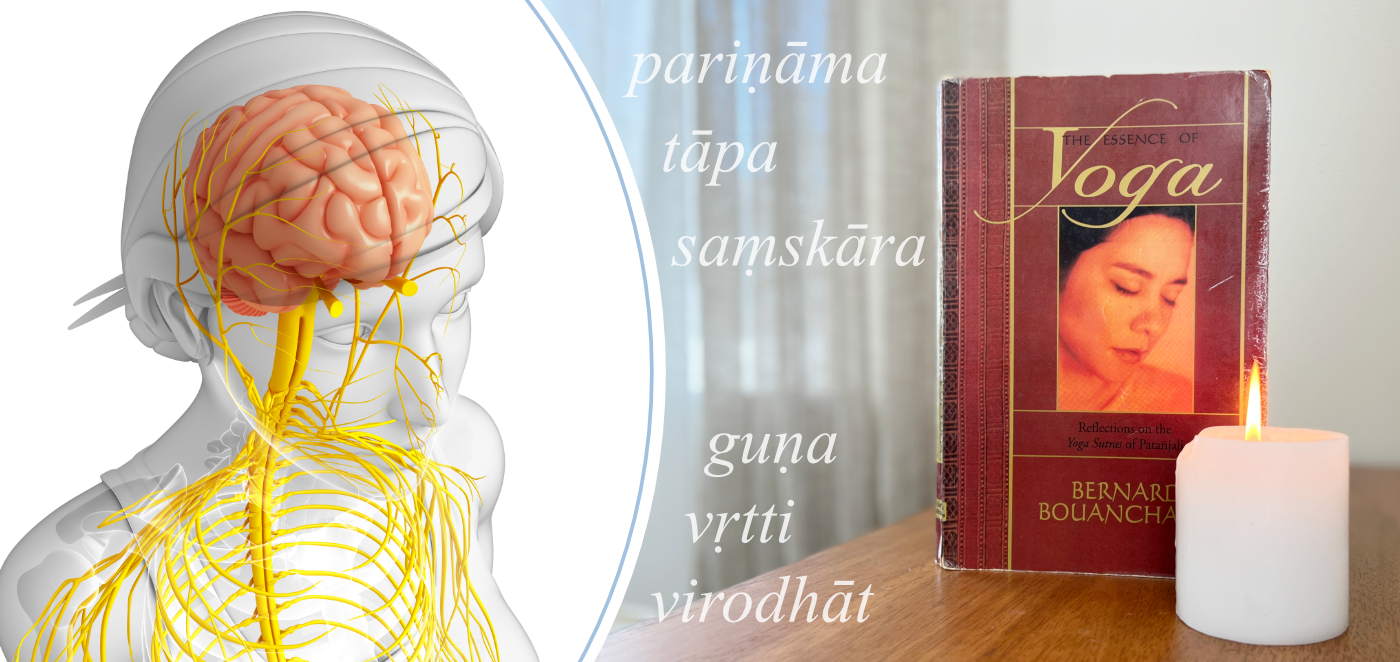
Parinama – change, transition
One of your students might be about to become a parent; another one is dealing with menopause; somebody else might be recently unemployed or have lost a partner. All of us are emerging from the pandemic with uncertainty about what comes next. Any time we experience a significant life transition, things get rocky for a while. Our nervous systems like certainty and try to predict what comes next based on what has happened in the past. When we experience a life transition, our past experience is useless if we’ve never lived through anything similar before. This is a very turbulent time for the nervous system as it tries to figure out what life will look/feel like on the other side of the transition and what your organism needs to do to adapt. This time can be characterized by physical, physiological, and mental-emotional discomforts that might seem unrelated to the transition. Once the new reality and our place in it become more firmly established, the discomfort usually subsides.
Tapa – torment, pain
Scientists still don’t know how the brain constructs the experience of pain. The brain doesn’t have pain receptors itself, but the pain is only felt when the brain registers it. The experience of pain begins with nerve endings called nociceptors. They react to three kinds of stimuli: thermal, chemical, and mechanical. When you miss a step and twist your ankle, the message is sent to the spinal cord and brain via two types of fibers – fast-conducting A delta fibers that give you the immediate “ouch” and slower-acting C fibers that give you the sensation of throbbing pain afterward. There is a clear purpose to acute pain – to remove you from a dangerous situation and protect/immobilize the area to help you heal. But often, acute pain turns into chronic pain, even after the actual tissue damage has healed. The purpose and the mechanism of chronic pain are not at all clear. Irene Tracy, the dean of Merton College who has been studying pain for over twenty years, says: ”When most parts of the body are damaged, they stop working–they switch off. But when nerves are damaged, they do exactly the opposite–they switch on. Sometimes they just won’t switch off, and that is when you get chronic pain.”(2) It is as if the volume knob of pain gets turned all the way up. The nervous system gets stuck on high alert, unable to differentiate between actual pain and a random sensation, and always expecting the worst. Read more about chronic pain >
It is very difficult to figure out how to turn the volume down. Part of the reason is that chronic pain is “curiously mutable. It can be increased, attenuated, or even ignored by the brain depending on the situation. […] Being depressed or worried will almost always increase perceived levels of pain. But equally pain is decreased by pleasant aromas, soothing images, pleasurable music, good food, and sex. Just having a sympathetic and loving partner cuts the reported pain of angina by half, according to one study. Expectation is hugely important, too. In many ways, we feel the pain we expect to feel.”(2) That is why when we deal with chronic pain, we need to emphasize soothing and retraining our nervous system to take it out of the state of high alert.
Samskara – scars of the past, trauma
When something happens to us that leaves deep emotional scars, it becomes imprinted into our nervous system. Our nervous systems are designed to learn quickly from our experiences in service of self-protection; that mechanism is turned against us when we deal with trauma. Since the nervous system is mainly concerned with our safety and survival, anything that undermines those two fundamental needs leaves lasting impressions and gets reactivated at the slightest hint of actual or perceived danger. The body secrets massive amounts of stress hormones which impacts every level of our system and spills into every aspect of our lives.
Bessel van der Kolk, MD, in his book The Body Keeps the Score: Brain, Mind, and Body in the Healing of Trauma, writes: “After trauma the world is experienced with a different nervous system. The survivor’s energy now becomes focused on suppressing inner chaos at the expense of spontaneous involvement in their life. These attempts to maintain control over unbearable physiological reactions can result in a whole range of physical symptoms, including fibromyalgia, chronic fatigue, and other autoimmune diseases. This explains why it is critical for trauma treatment to engage the entire organism, body, mind, and brain.”(3)
Guna vrtti-virodhat – chaotic fluctuations of gunas
According to the yoga tradition, there are three qualities, or three energetic forces, that are always present (to various degrees) in all things and beings in the world, including our emotional states and interactions. Sattva guna is the quality of light, love, and life; rajas is the quality of activity, movement, and turbulence; tamas is the quality of inertia, heaviness, and stagnation. The three gunas exist in dynamic interaction and influence each other in different ways. However, once one guna becomes dominant, it will remain dominant for some time. In one day, we can fluctuate between the states of rajas, tamas, or sattva dominance in response to the sensations within our body and signals from the environment; then we might get stuck in a particular phase for an extended period of time. For example, we might feel mildly irritated (rajas) and somewhat depleted (tamas) and then descend into a place of utter exhaustion (tamas).
The Polyvagal Theory pioneered by Dr. Stephen Porges closely reflects the yogic idea of the three gunas and demonstrates how gunas show up in our autonomic nervous system through the lens of our essential needs for safety and connection to other humans. The Polyvagal Theory looks at the same three qualities of the gunas and ties the interactions between states to the activities of the vagus nerve.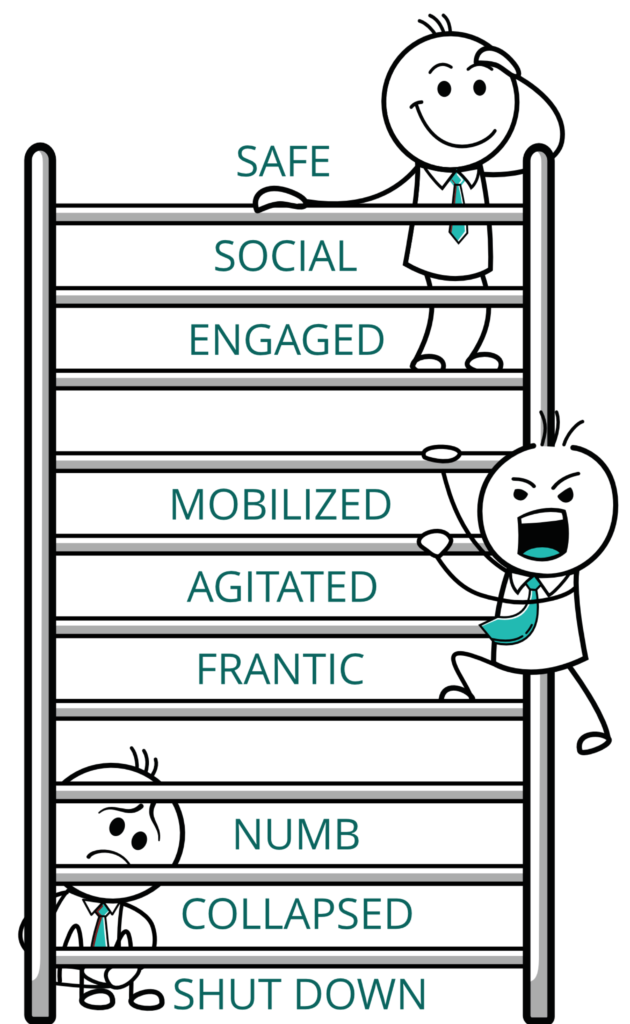
Ventral (or “social”) vagus activation is a sattvic state. It puts you in a state of safety and connection. In this state, you are most open to connection with others, the world seems like a welcoming place full of possibility, and you are able to feel compassion both toward yourself and others.
The sympathetic system, or rajasic state, gets activated when you need to take action. You are still searching for protection and safety, but in this state, you do it by mobilizing your resources. Your entire body is on high alert and ready for action, which means you see, hear, and sense danger everywhere. This state can manifest as frenetic movement, busyness, fidgeting, and defensiveness. This is a hyperaroused state.
Dorsal (or “primitive”) vagus activation, or tamasic state, stops you dead in your tracks and makes you feel frozen, numb, or “not here”. Your system is drained, and your energetic resources are being conserved through collapse and total shutdown. This happens when you feel completely exhausted or lost. This is a hypoaroused state.
If all goes well, you cruise through your day, mobilizing your resources and then slowing down and recovering, as necessary, to meet the day’s challenges. But if things spiral out of control, you might find yourself descending into a place of either chaotic activity or complete shutdown. This is more likely to happen when dealing with major life transitions, chronic pain, or trauma.
To summarize, sutra 2.15 seems to encapsulate all major causes of our physical and mental suffering: life transitions, pain, trauma, and chaotic fluctuation between various levels of arousal. All of these have roots in our nervous system’s attempts to adapt to our changing reality, sometimes misfiring and sometimes overprotecting.
Bessel van der Kolk writes: “If we look beyond the list of specific symptoms that entail formal psychiatric diagnosis, we find that almost all mental suffering [and, I would add, a big chunk of physical suffering–O.K.] involves either trouble in creating workable and satisfying relationships or difficulties in regulating arousal (as in the case of habitually becoming enraged, shut down, overexcited, or disorganized). Usually it’s a combination of both.” (2) That’s why simply popping a pill, stretching one’s hamstrings, or repeating affirmations doesn’t help. Luckily, yoga offers a fantastic variety of tools we can use to soothe our nervous system and manage our levels of arousal. We will begin our conversation about different yogic models for dealing with trauma next week – tune in!
[jetpack_subscription_form]
References
- The Essence of Yoga: Reflections on the Yoga Sutras of Patanjali by Bernard Bouanchaud
-
The Body: A Guide for Occupants by Bill Bryson
-
The Body Keeps the Score: Brain, Mind, and Body in the Healing of Trauma by Bessel van der Kolk M.D.
-
The Polyvagal Theory in Therapy: Engaging the Rhythm of Regulation by Deb Dana

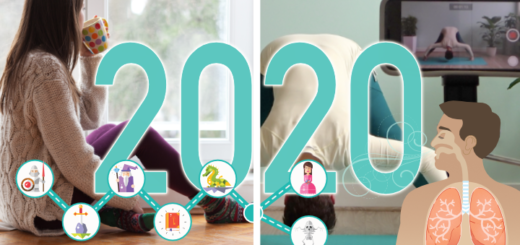
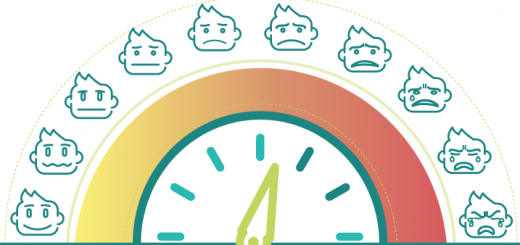
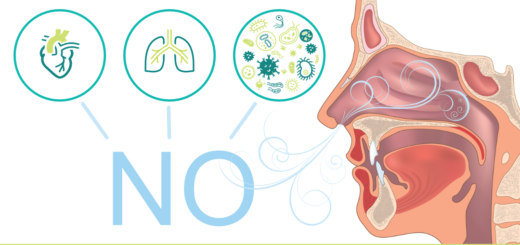
















Excellent and clearly explained!
Thank you Terri 🙂
Olga you are amazing! Thank-you so much for these incredible articles, what a gift. Thank-you for digesting and then translating so much complex information into such an accessible and useful format. Thank-you, thank-you, thank-you.
All shanti, Lou
Thank you, Lou! There is so much wisdom in those sutras; every time I re-read them I see something new, as I continue to evolve myself. So happy to hear you found it useful.
Love your writing and the way you describe the issues everyone is having. Also acknowledging that there is a cure for everything. I am a Yoga teacher of 20+ years and I agree, its not just about stretching your hamstrings.
Love your yoga vibe
🙂 Hamstrings can be a part of a well-balanced program, right? 😉
This is an excellent post. Thank you!
Thank you, Conni!
Hi I am a therapeutic yoga teacher and am very interested in this post . Different people respond in different ways to life’s body-mind challenges . I would like to learn more about this topic and how to use the information for healing mind and body via yoga practices.
Thank you, Bonnie! Lots more to come on this subject from some very experienced yoga teachers and therapists. I also did a series of blog posts on chronic pain and how yoga can help if you are interested.
this is so useful, thank you. I will save it to read again. Looking forward to seeing your yoga models.